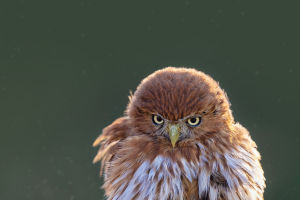Red pandas are highly territorial and live a solitary existence except during mating season. Instantly recognisable by their red colouring (and cute face), long bushy tails (and cute face) and racoon like features (and cute face) they are excellent tree climbers and are able to descend trees headfirst.
The red panda is an endangered species with a declining population, though the exact number of surviving individuals is difficult to establish because of its shy and secretive nature. Here are 5 more facts you may not know about these furry red mammals.
1. They Are the Only “True” Panda
Like giant pandas, red pandas are a bamboo-munching species native to high forests of Asia. While the two animals share a name and favorite food, they’re not closely related. Western scientists described red pandas 50 years before giant pandas, and named the black-and-white bear after the smaller red panda because of their shared characteristics, like a taste for bamboo and a bonus digit called a pseudothumb. But the latest research has placed red pandas in their own taxonomic family, Ailuridae, while giant pandas belongs to the Ursidae, or bear family. That makes red pandas the only “true” panda. The term "panda" is believed to be derived from the Nepalese words "nigalya ponya" which translates to "bamboo eater."
2. They Mostly Eat Vegetation
Though red pandas are carnivores, they rarely eat meat. The term carnivore refers to their biological order, not their dietary preference. Because red pandas descended from a shared ancestor with other carnivores, they share cat-like facial features and teeth, but they switched to a bamboo-based diet more than two million of years ago. However, they are not strict vegetarians; they also forage for insects, grubs, and even birds and small mammals. They have the digestive anatomy of a carnivore that specializes in digesting protein and fats rather than the plant fibers and carbohydrates that make up most of their meals.
3. Red Pandas Are One of Earth’s Living Fossils
Fossils found at the Gray Fossil Site in Tennessee suggest that ancient relatives of the living red panda inhabited North America between 4.5 and 12 million years ago. Known as the Bristol’s panda (Pristinailurus bristoli), the ancient panda was first discovered in 2004, when researchers from East Tennessee State University found skeletal fragments and a single tooth at the famous fossil site. The fossils were found to belong to an undiscovered ancient species and a more complete jawbone specimen was uncovered a few years later.
4. Red Pandas Are Born Covered in Fur
Baby red pandas are about as cute as you’d imagine, weighing anywhere from 3 to 4 ounces at birth. Cubs are born completely covered in fur to protect them from their high-altitude cold environments. Red panda offspring stay with their mothers until they are fully grown, which takes about a year.
5. They Are Smelly Socializers
Red pandas usually prefer to live on their own, except for moms and their young cubs. Because males are solitary, they must work to find a female partner and begin searching for a suitable mate in the winter and early spring. To alert other pandas to their presence, males mark territory with scent glands on their feet and at the base of their tail. The glands secrete a colorless liquid that is pungent to pandas, but odorless to humans. They also opt for another charming trick: personal poop piles. These poop piles are basically a message post saying,” Hey, I'm in the area.” Once a male finds a female, they'll follow them around and hang out closely, because you only have that short 24- to 48-hour window where she's going to turn around and go, “Okay, you're cute.”


